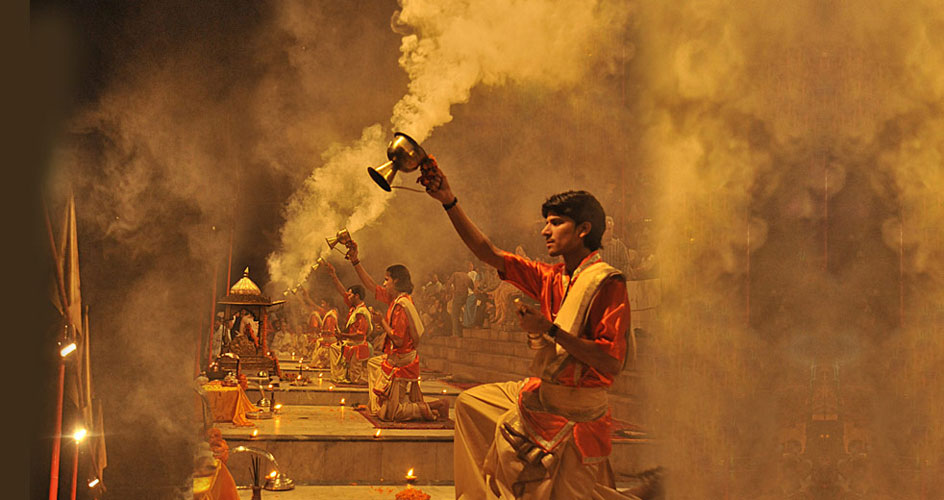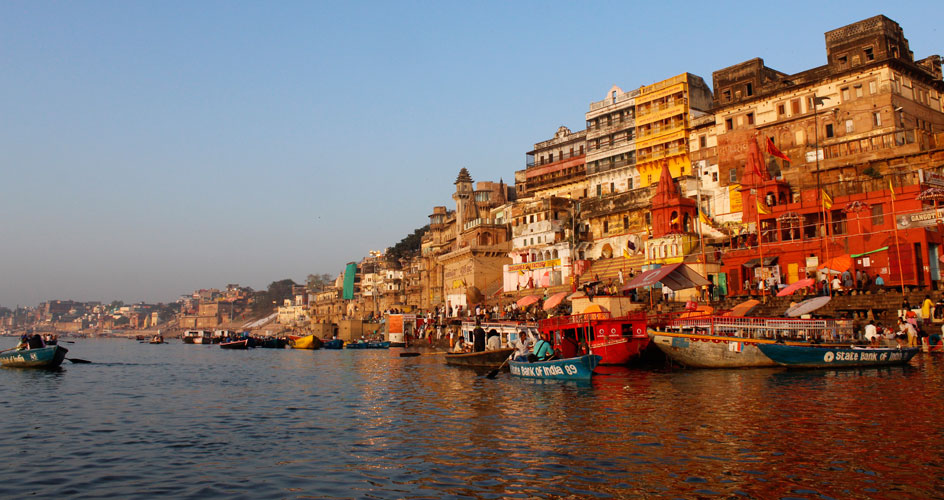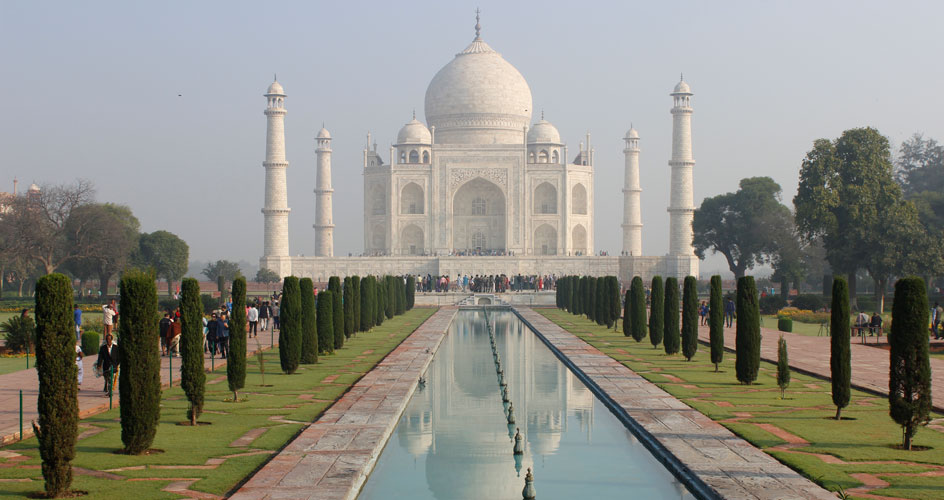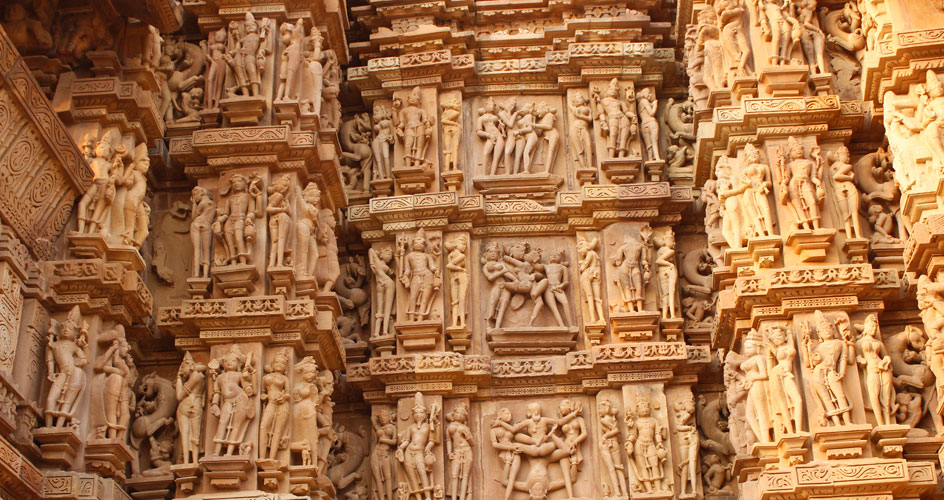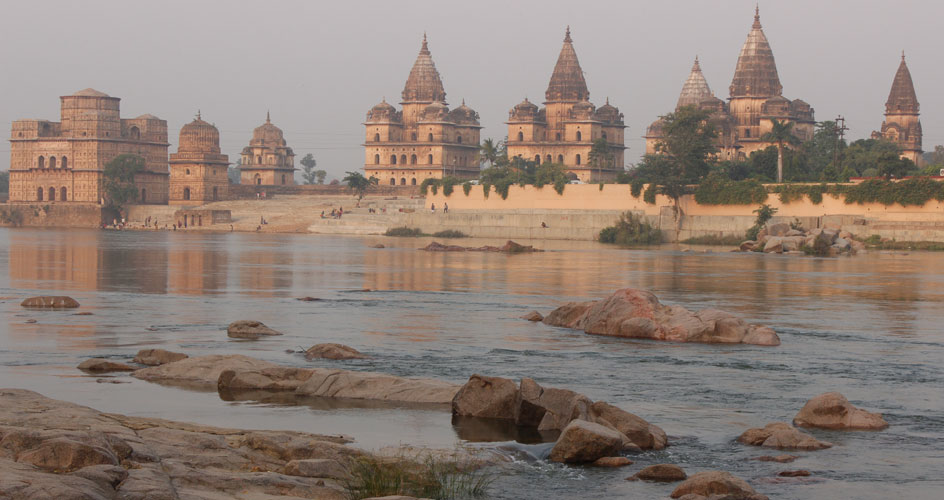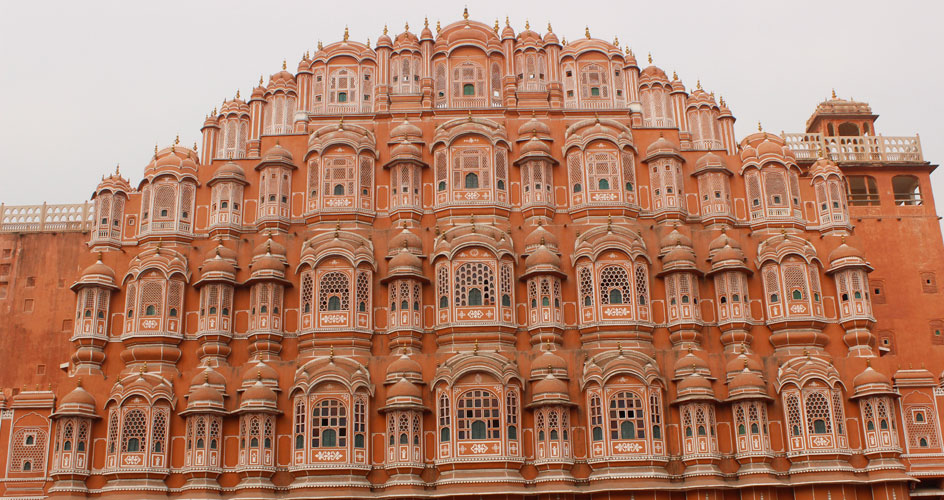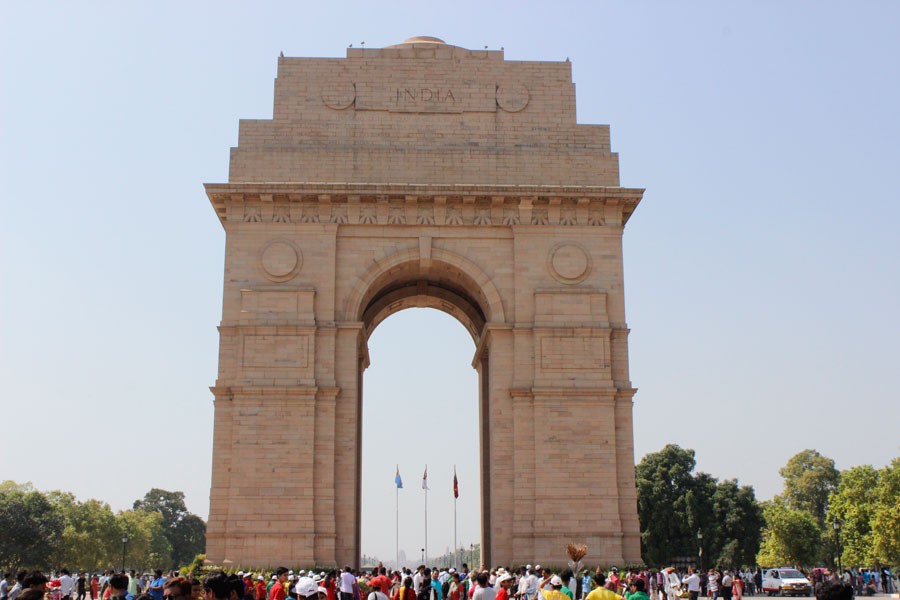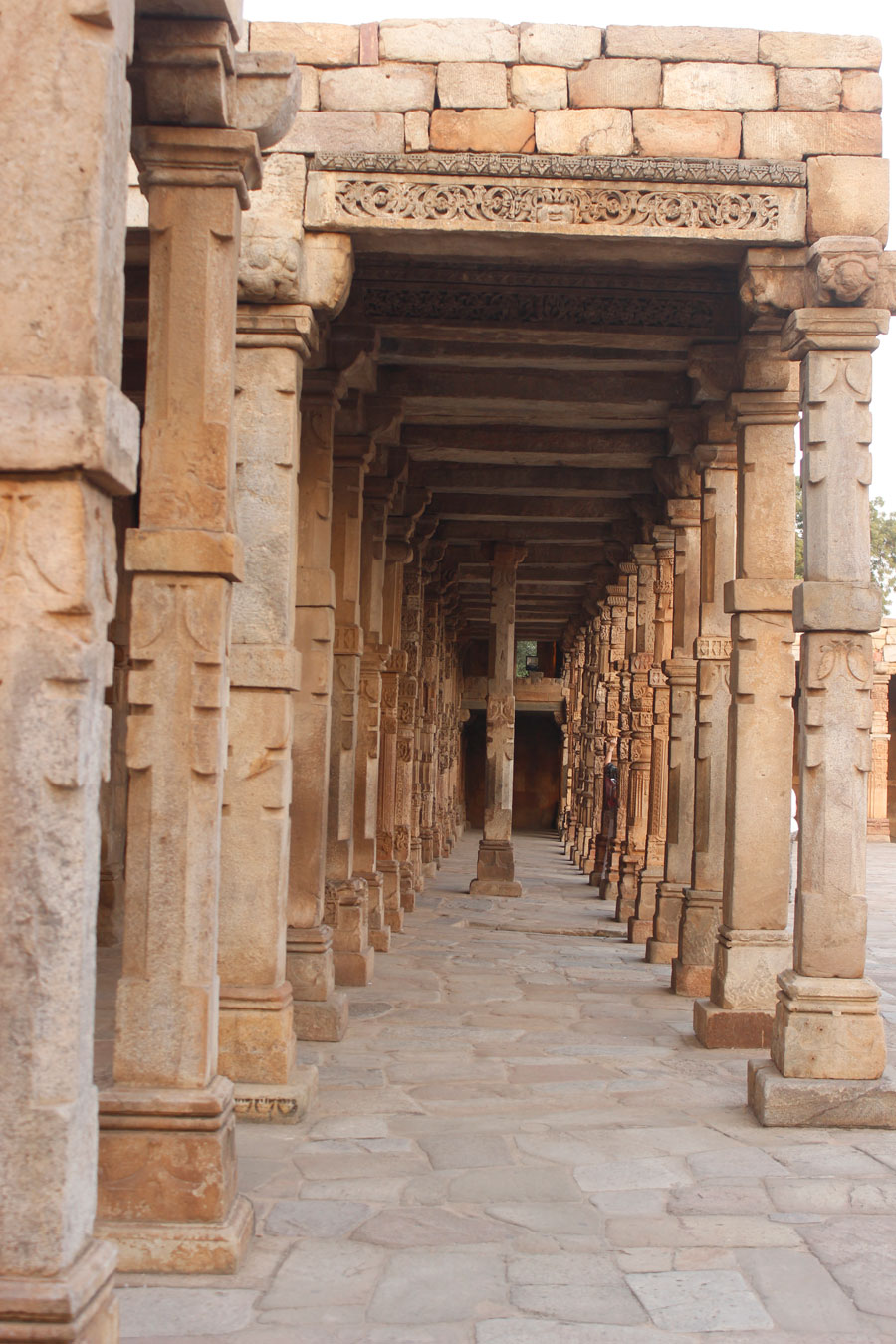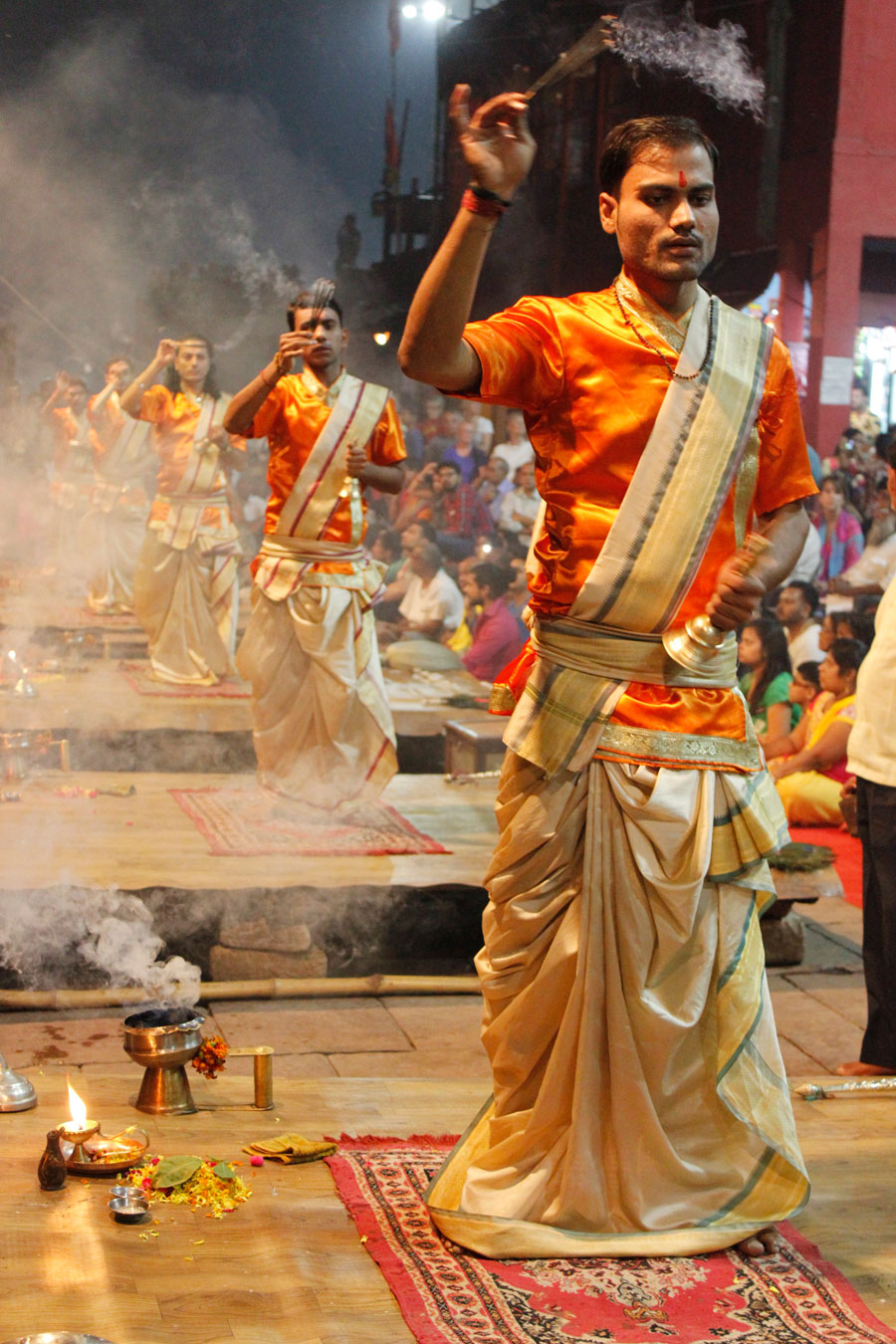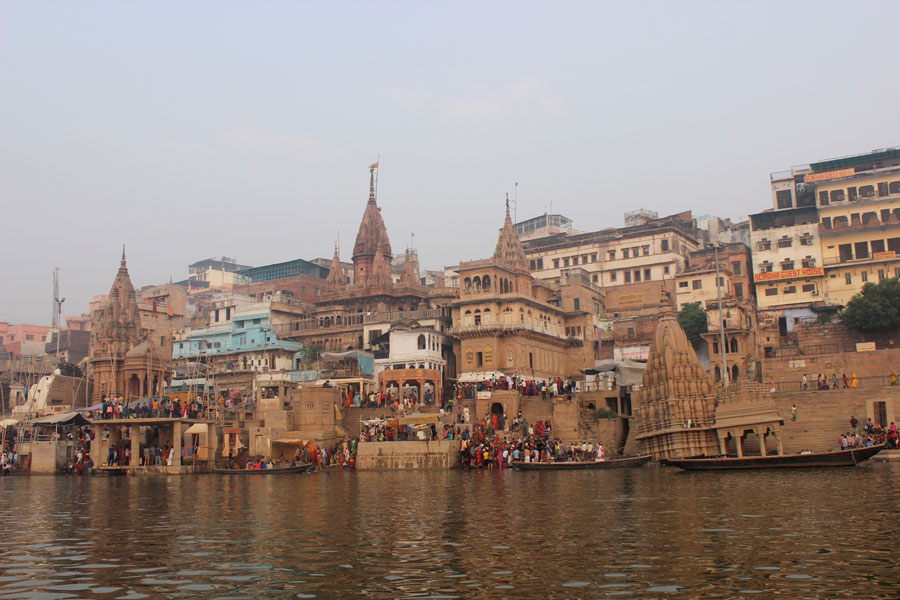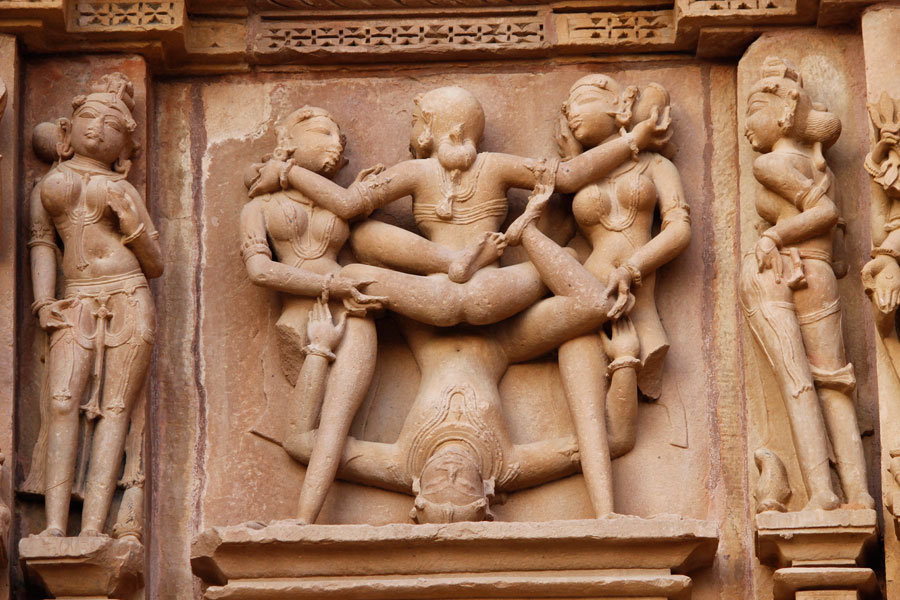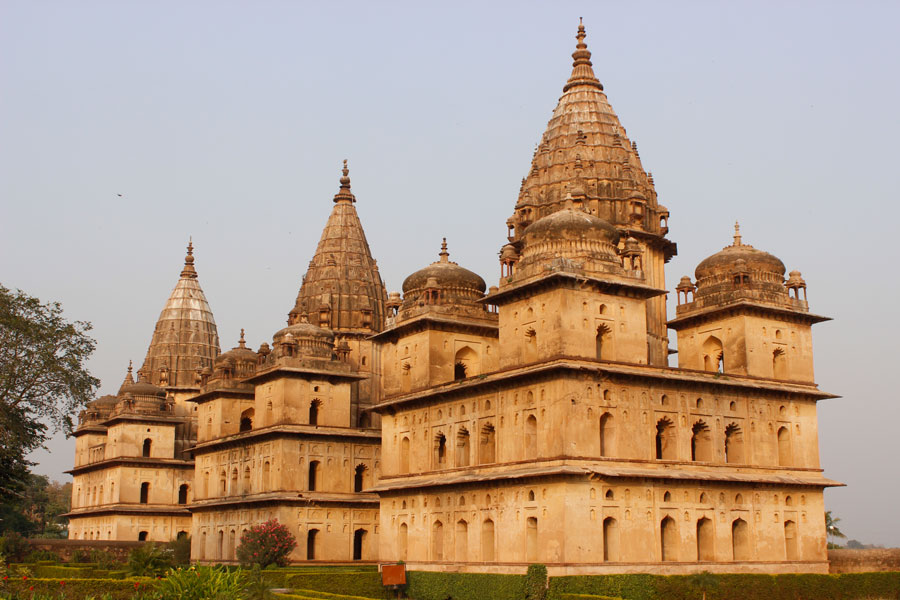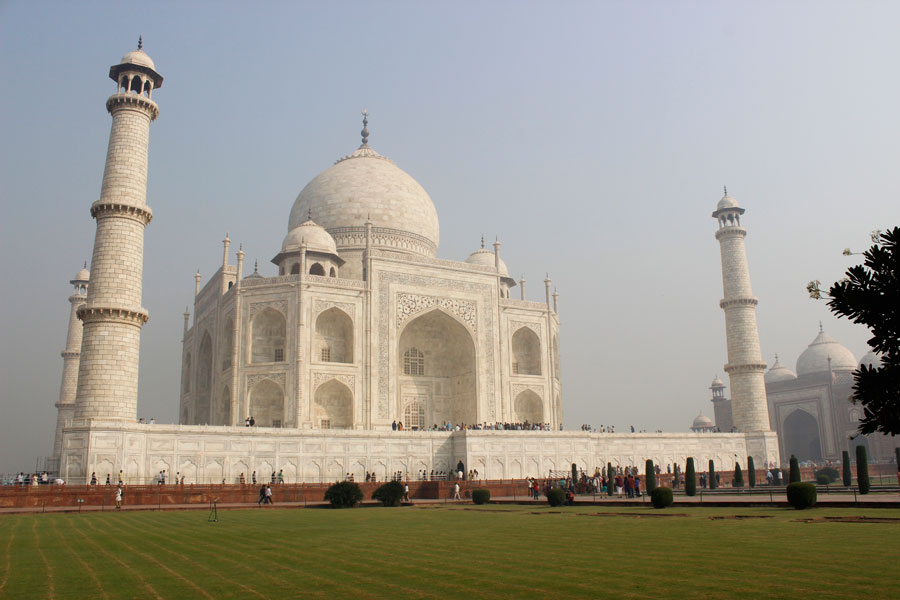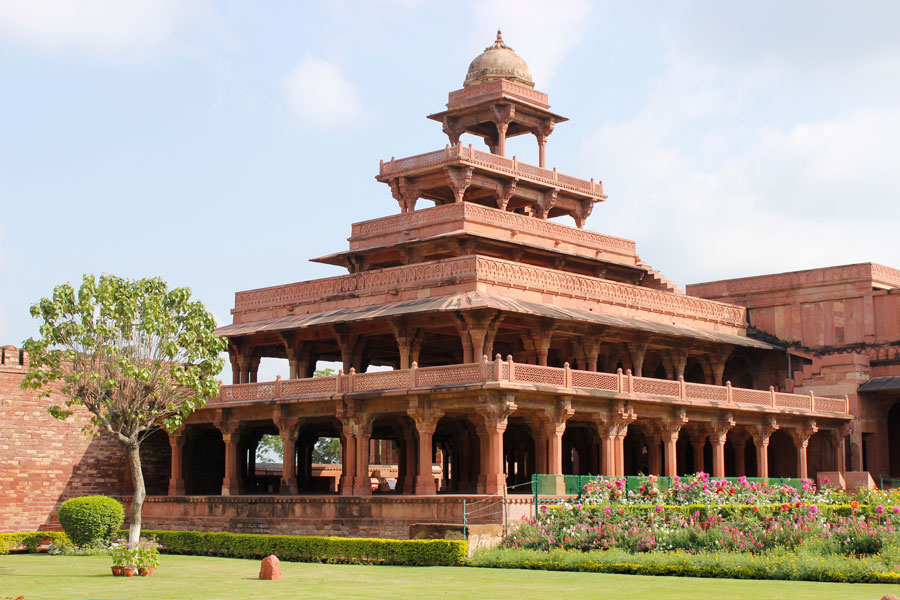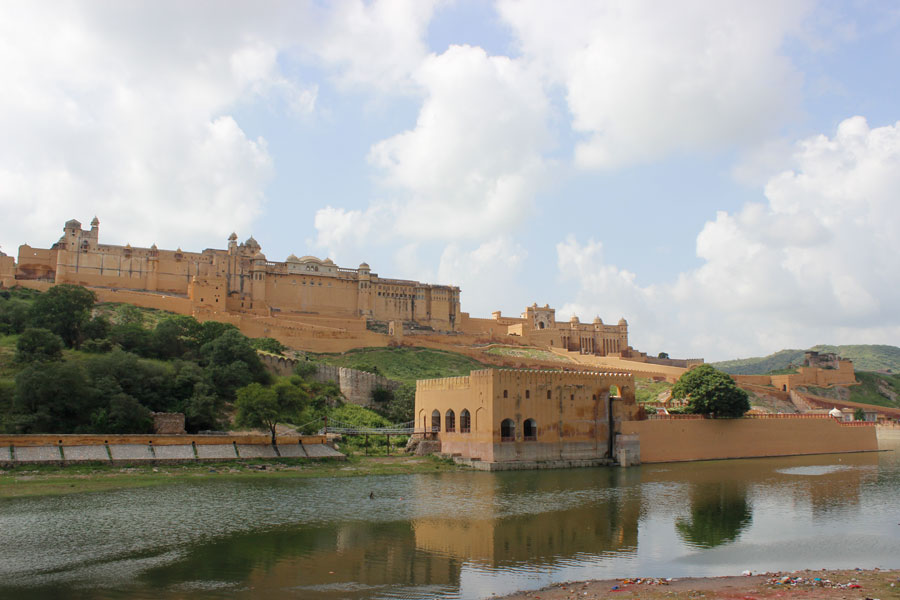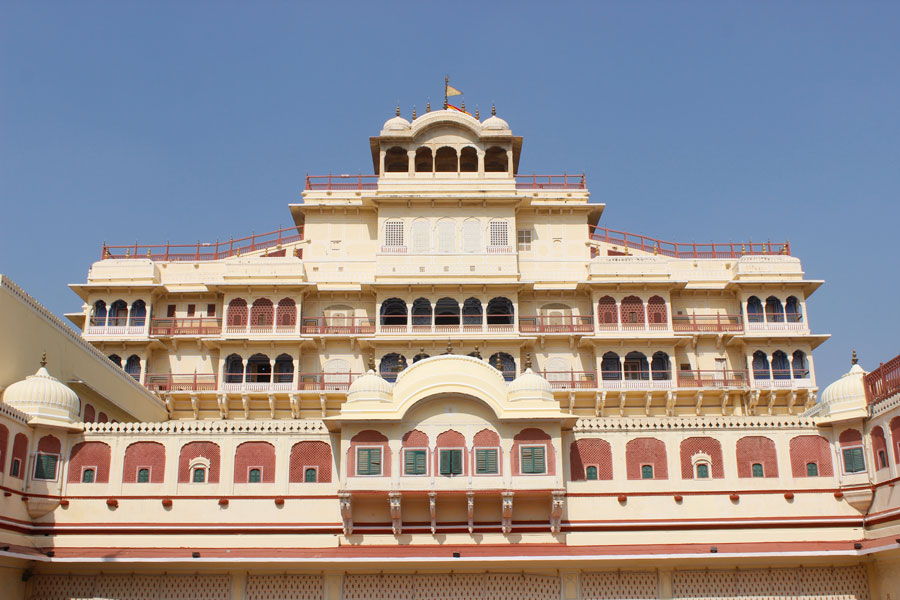Highlights of Classical India Tour
In our Classical India Tour, you shall feel and experience the true essence of India. India, known for its rich history, heritage and culture, you shall get to witness and experience the hold River Ganga, various temples and palaces of India, and off, course the Taj Mahal. India is a land of my religion and culture, and in our Classical India Tour, you can witness various Hindu temples and Islamic monuments, Buddhist sites in Sarnath. The holy river Ganga is not merely a river but considered as a mother, a goddess and the soul of many Indians.
The depiction of the Kama Sutra on the temples of Khajuraho always shows how to advance ancient India was in its knowledge of sex and the architecture of temples and palaces in Orchha is bound to leave you speechless. Our Historical Classical India Tour runs traveler through the lifeline of Indian transportation, the railways shall assure you in providing an unforgettable journey and experience.
Itinerary Details
Day 01
Welcome in India
Delhi
As you arrive in Delhi, we will extend our traditional warm welcome at the airport and with assistance transfer to your confirmed hotel. Unpack, relax, and recover from jetlag in your comfortable room. Get ready for your first day on this Classical India Tour.
Day 02
Sightseeing tour in Delhi
Delhi
Today, start the trip with Old Delhi and pay a visit to the largest mosque in India – Jama Masjid and then Chandni Chowk Market. After Old Delhi, proceed to Humayun’s Tomb which serves as a mausoleum for the Mughal Emperor, Humayun. The site reflects Central Asian and Persian styles of Islamic architecture.
Later, visit India Gate and drive-pass President’s House and the Parliament House. India Gate is a war memorial dedicated to the 70000 soldiers of the British Indian Army who lost their lives during the First World War. After the 1972 War, a small structure was added known as the “Amar Jawan Jyoti” which consists of a black marble plinth, an inverted rifle, and a soldier’s helmet, bounded by four eternal flames, This structure serves as a memorial for the unknown soldiers who have lost their lives in service of the country.
Post lunch, take a tour of Qutub Minar, which is the tallest brick minaret in the world. This UNESCO World Heritage Site is 73 meters high, and this 5-story structure has a tapering design, with the circumference of the minaret reducing in circumference as we ascend higher. The structure’s construction was started by the founder of the Delhi Sultanate, Qutub-Ud-Din-Aibak, and Firoz Shah Tughlaq and Sher Shah Suri contributed to additions to this monument.
Day 03
Fly to Varanasi Transfer to the hotel
Delhi-Varanasi
Transfer to the airport and then fly to Varanasi and on arrival transfer to the hotel.
Varanasi is one of the oldest cities in the world and has held immense importance to Hindus and Buddhists who consider the city sacred.
You can also visit a center for silk weaving as Varanasi’s silk is famous all over the world. You will be given a live demonstration of silk weaving and can also purchase and shop for silk and silk products.
In the evening, visit the famous ghats of the holy river Ganges and witness & experience, the Aarti or prayer of River Ganges with a spectacular sight of oil lamps floating in the river as a backdrop and hearing harmonious hymns, this sight, and sound is an ultimate spiritual experience soothing the soul.
Day 04
Varanasi City Tour
Varanasi
Today commence the day with a morning boat ride on the holy River Ganges. It is said bathing and taking a dip in this sacred river cleanses the soul and washes away past sins. Later, also take a short walk through the narrow lanes of old Varanasi exploring various hidden gems and daily life.
After breakfast, we head to Sarnath and visit Buddhist Stupa on this Historical Classical India Tour. It is said that Gautam Buddha gave his first sermon in Sarnath and it is from here, Buddhism spread all around the world. Sarnath is a famous pilgrimage destination for Buddhist from all over the world.
Day 05
Fly from Varanasi to Khajuraho
Varanasi-Khajuraho
Transfer to the airport and then take a flight from Varanasi and travel to Khajuraho which is often referred to as the Land of Kama Sutra.
On arrival, assistance, and drive to the hotel. Continuing our journey through the historical India tour, visit the Western and Eastern Group of temples which are a group of Hindu, Jain, and Buddhist temples. These temples are famous for their Nagara-style of architecture and are more famously known for their erotic sculptures displaying various sexual positions from the Kama Sutra.
Day 06
Drive to Orchha (04 Hours) Train from Jhansi to Agra (02 Hours)
Khajuraho-Orchha-Jhansi-Agra
Take breakfast at the hotel and then travel to the rustic town of Orchha. Here visit famous sites like Orchha Palace, Jahangir Mahal, Chaturbhuj Temple, and Ram Raja Temple and many beautiful cenotaphs dotting the Betwa River.
The Ram Raja temple is constructed on a square base and has a plain and simple exterior and is decorated by a series of windows and domes along its summit. The Jahangir Mahal is a beautiful specimen of the Mughal architecture and is built on a square base and is relieved by a circular tower at each corner mounted with a dome.
Later, embark Shatabdi Express Train from Jhansi to Agra. On arrival in Agra, you will be received and transferred to the hotel. Your journey on the Classical India Tour is now heading towards the historical monument of love the Taj Mahal
Day 07
Agra sightseeing tour
Agra
Agra is home to one of the seven wonders of the world, the Taj Mahal, and any trip to Agra is incomplete without visiting the Taj Mahal. Shah Jahan built the Taj Mahal as a mausoleum for his beloved wife, Mumtaz Mahal.
The Taj Mahal showcases the Persian and Mughal styles of architecture. The structure of the tomb has a central marble dome surrounded by smaller domes and four white-marble minarets. The walls of the Taj Mahal are adorned with Arabic and Islamic calligraphy, plant motifs, calligraphy of Persian poems, marble lattices, and reflective tiles.
After witnessing one of the seven wonders of the world, head to Agra Fort, which has served as the base for many Mughal Emperors. Built on a 94-acre semi-circular plan, it runs parallel to the Yamuna River and has 70-foot tall walls.
Day 08
Drive to Jaipur (05 Hours)
Agra-Fatehpur Sikri-Jaipur
Today depart from Agra for Jaipur and en-route visit the deserted citadel Fatehpur Sikri which once served as the capital of the Mughal Emperor Akbar. In Fatehpur Sikri, visit Bulund Darwaza, Tomb of Salim Chisti, Diwan-e-Aam, Diwan-e-Khas, and more sites. The Bulund Darwaza is 55-meter high and is set in the south wall of the mosque.
After lunch, also stop at Abhaneri, a small village 95-km ahead of Jaipur and is famous for its step well known as the Chand Baori- one of the deepest largest step-wells in India. Upon arrival in Jaipur, transfer to the hotel. The adventure continues on the classical India Tour.
Day 09
Jaipur City Tour
Jaipur
In the Pink City, Jaipur, embark on a day-long excursion. First visit Hawa Mahal, Amber Fort, Jantar Mantar and City Palace exploring the culture, heritage, and royalty of Rajasthan.
Amber Fort is situated in Amer town about 11-km from Jaipur city and is famous for its Hindu artistic style of architecture. Amber Fort contains massive ramparts and series of gates and cobbled paths; the fort overlooks Maota Lake.
It includes the Diwan-e-Aam, Diwan-e-Khaas, the Sheesh Mahal or the Palace of Mirrors and the Sukh Niwas, where a cool natural eco-system is constructed with the air flowing over the waters of the lake.
Day 10
Drive to Delhi Airport (05 Hours)
Jaipur-Delhi
In time, check out from the hotel and take a comfortable road journey to Delhi airport to board the international connection back home. Here we conclude our Historical Classical India Tour.
As one of the top-rated tour operator in India, our guest loves us for the authentic Indian experience they get on all the tour packages we design. Check out some other exciting India tour packages like Central India Tour, Tamilnadu Temple Tour, South India Architectural Tour, Kerala Onam Festival Tour.
You may also check our Rajasthan Tour Packages, Tribal Tours in India or South India Tour packages for some amazing trip plans of this beautiful country.
HTOI Special Activities
- Kathak Dance Show at Varanasi
Kathak is one of ten classical dance forms of India and Varanasi is probably the best place to watch a live show of it. There are families here, which teach and practice Kathak from generation to generation. You will be amazed to see the four generations performing live in front of you, from an 80 years old great grandfather to a 15 years old girl. Watching it is just like a teat to the eyes. Stylistically, this oldest dance form of India stresses rhythmic movements of the foot, decorated with tiny bells and the movement matched to the music.
- Rickshaw Ride in Pink City
To explore and feel the colorful traditional bazaars of Pink City, nothing is better than riding a cycle rickshaw. In half an hour ride; you will see everything being sold in the markets starting from the vegetable to the most expensive diamonds. There are separate markets in the old city for books, jewelry, groceries and many more. Everything is pink and vibrant here be it a Shiva temple or historical Jama Mosque.
Feedback from Guests Who Joined this Tour in Past

Erik-Jorgensen, Denmark

Elizabetta italy

Shaul and Mira Lev

Sandy,-South Africa
Information & FAQs
Classical India Tour: Traveling through the culture and Traditions
Travelers from around the world have always been fascinated by the diverse culture, rich history and cultural heritage of India. Exploring the treasures of our specially designed Classical India Tour will take the visitors on an incredible trip through traditions and time. From the spectacular monuments to the spiritual Varanasi, from the vibrant Jaipur bazaars to the delicious food of Delhi, each aspect of India gives a special experience that lingers in the hearts of visitors forever.
The Glorious Heritage of Classical India
Understanding the richness of the Classical India Tour
Classical India is usually referred to as the historical era starting from 200 BCE to 650 CE, In this period India achieved significant artistic and cultural milestones. This was an era when everything flourished from philosophy, art, and trade shaping India’s identity for years to come. However, we have included the culture, arts, crafts, history, food, and music from the ancient to modern era in this Classical India Tour Program.
Historical importance
During this time-spa, India as a country witnessed the various rises and falls of many strong empires, such as the Mauryas, Cholas in the South, Chandelas, Guptas and each leaving behind their marvelous architectural wonders and superbly intricate artwork.
Cultural Diversity of India
Classical India as well as contemporary India has been a melting pot of different cultures, with many dynasties spreading in various regions of the country. This diversity is very much evident in the languages, cuisine, architecture, traditions, and festivals of India.
Classical India’s Art and Architecture
The artistic excellence of this period is clearly visible in many monuments of India like the exquisite Khajuraho Temples, Sarnath Stupa and ruins, Ajanta and Ellora Caves, and the brilliance of Indian temples in down South like Brihadeeswara, Shore Temple and Meenakshi temple, etc.
Visiting the destinations of classic tours india
What is the Classical India Tour?
Classical Tours is our handcrafted tour program including the most beautiful destinations such as Delhi, spiritual Varanasi, magnificent Khajuraho, a hidden gem of Orchha, an enjoyable train ride, the wonders of the Taj Mahal, and the vibrance of Jaipur.
Delhi – The National Capital City of India
Delhi has two parts New Delhi and Old Delhi and it is the national capital of India so it has a mixture of modernity and ancient heritage. Here, you will explore Jama Masjid, Qutub Minar, Red Fort, India Gate, Humayun’s Tomb, and many more attractions.
Agra – the city of the magical Taj Mahal
Agra is known as the city of Taj – the monument of eternal love made for the beautiful Empress of Mughal King Shah Jahan. The Taj Mahal is known for its architectural brilliance and unforgettable love story. Apart from the Taj – you will explore historical marvels like Fatehpur Sikri, Itmad-Ud-Daulah Tomb, Sikandra, and the magnificent Agra Fort – a UNESCO World Heritage Site.
Jaipur – The Pink City of Rajasthan
Jaipur is one of the most vibrant cities not only in Rajasthan but in India. The historical pink buildings of Jaipur amaze the visitors. Some of the attractions of Jaipur are not to be missed as the stunning Amber Fort, a world heritage site, the Royal City Palace of Jaipur, Hawa Mahal’s beauty is just a delight to the eyes, and picturesque Jal Mahal. UNESCO has correctly included Jaipur in a list of World Heritage Cities.
Orchha – The Hidden Gem of Central India
Orchha is a small rustic town located in the central India state of Madhya Pradesh on the banks of the beautiful Betwa River. Orchha is famous for its superb palaces, stunning temples, and amazing cenotaphs.
Appreciating Spiritual Tranquility during Classic Holidays India
Spiritual Affairs
India has diverse spirituality as it is a home of various faiths. On this trip, explore the below places to find your inner tranquility and peace.
Varanasi – The ancient spiritual center
Varanasi is a confluence of faiths located on the historical Riverfronts known as the Ghats of the Holy River Ganges. It is the land of Lord Shiva and the best place to understand the cycle of death and life. Here you will also get the wisdom about Buddhism because near to Varanasi in Sarnath Lord Budhha delivered the first sermon.
Khajuraho – The land of Kamasutra temples
Khajuraho popularly known as a village of Kamasutra temples is a small hidden village in central India’s Madhya Pradesh state. The temples of Khajuraho are built in sandstone by Chandela Rulers and are divided into Western and Eastern Groups of Temples. These temples will stun you with intricate carvings, and sexual figures showing different human emotions, compassion, love, and calmness.
The Food during Classical India Tour
The Local Cuisine Exploration
As the cuisine of India is hugely diverse which you will experience during this trip from Mughlai food to local Rajasthani meals and from Royal Kitchen to street food, your tongue will experience the different flavors of Indian Spices.
Unique Flavors
On this trip, you will enjoy the different flavors of North Indian, Mughlai, Rajasthani, and Chandela cuisine. Infected cities like Delhi, Agra, Varanasi, and Jaipur are greatly popular for their street foods.
In the Dishes, one should never miss
Butter Chicken, Laal Maas, Varanasi Kachori, Jaipuri Lassi, Vegetarian Thali of Rajasthan, and local sweets from Agra.
Useful Tips for the Visitors
Travel Tips for the Journey
Before taking classic journeys in India, you must consider the below tips for a seamless and memorable trip.
The best period to take this trip
Although, one can take this trip round the trip but still the suggested period is from September till April. Whereas the period from October to March is considered the best.
Respect the local customs
Always be sensitive towards the local faith and their traditions and customs, and cover yourselves while visiting any places of worship.
Safety for Health
Bring your medicines with you if you are taking any, take the vaccinations if required for this region, and carry sunscreen, sunglasses, and a hat with you.
Classical India Tour FAQ
How many days are required for HTOIndia’s Classical India Tour?
It is a 10-day tour program and can be customized
What are the main highlights of Khajuraho?
Khajuraho is known for its erotic temples made from sandstone on a granite foundation.
What one can expect from a guided tour of India?
You will get seamless services, pre-booked accommodations, comfortable cars and knowledgeable guides, a train ride, a boat experience, and an elephant ride,
Why is the classical India Tour unique?
This trip shows the true essence of India in less than two weeks, be it spirituality, art, architecture, culture, heritage, music, dance, food, or shopping.
What ancient India can I explore on this trip?
During this journey, you will see the treasures of ancient India such as the ruins of Sarnath, the temples of Khajuraho, the wonders of the Taj Mahal, and legends of Varanasi.
How do I plan this ancient India experience?
This is a specially designed itinerary including the archaeological sites, world heritage monuments, ancient destinations, and oldest traditions. Therefore this trip offers a great experience of ancient India.
What are the main advantages of any guided tour In India?
Hassle-free journey, pre-booked hand-picked hotels, polite and informative guides, professional drivers, comfortable transportation, and a reliable travel partner looking after every detail.
How many days does a Classical India Tour normally take?
This tour can be managed in 10 to 14 days depending upon the total days you have, the itinerary can be tailored as per your requirements.
What are the major historical sites in the Classical India Tour?
Taj Mahal of Agra, Forts, and Palaces of Jaipur, temples of Khajuraho, palaces of Orchha, Sarnath ruins, and Ghats of River Ganges.
Can one engage in spirituality during the trip to Classical India?
Absolutely yes! You will get numerous opportunities to immerse in spirituality like Yoga in the morning on the Ghats of River Ganges and Betwa, attending the Ganga Aarti, finding inner peace with Buddha temple, etc.
Are there enough culinary and shopping experiences on a classical India trip?
Absolutely many! The stunning handicrafts of Jaipur and Agra, handmade stone items in Khajuraho, and numerous food experiences in each destination.
How can one book the Classical India Tour?
This trip can be booked with a reliable tour operator in India or your local DMC and they will customize the itinerary and proposal as per your budget.
What things are essential for packing for a Classical India tour?
Walking shoes, A hut, sunglasses, Sunscreen, an Umbrella, comfortable clothes including winter clothes, medicines, travel insurance, and a valid VISA to India.
What places are included in the classical India tour?
The main destinations of this journey are Delhi, Varanasi, Khajuraho, Orchha, Agra, Fatehpur Sikri and Jaipur. All of these places are known for spiritual, architectural, and cultural values.
Is a train ride safe on a classical India tour?
We have proposed the train journey through a prestigious train and your compartment will be air-conditioned and comfortable. It is a full-service train and you will be served refreshments as well.
How comfortable is a boat ride in Varanasi?
A boat ride over the River Ganges is very enjoyable and comfortable. However, you can bring mosquito repellant cream in case you need it while taking the ride and also during the evening prayer time near the river.
Is it okay to photograph during classical India tour?
Indians are very welcoming and sweet people and they will be happy if you click on their pictures. But please avoid taking pictures of funerals and sick people.

